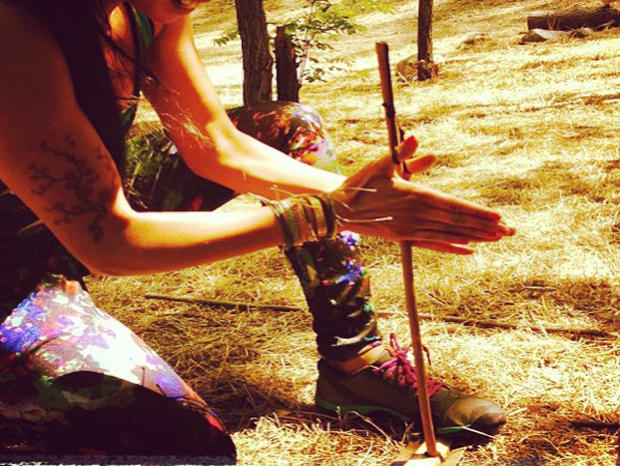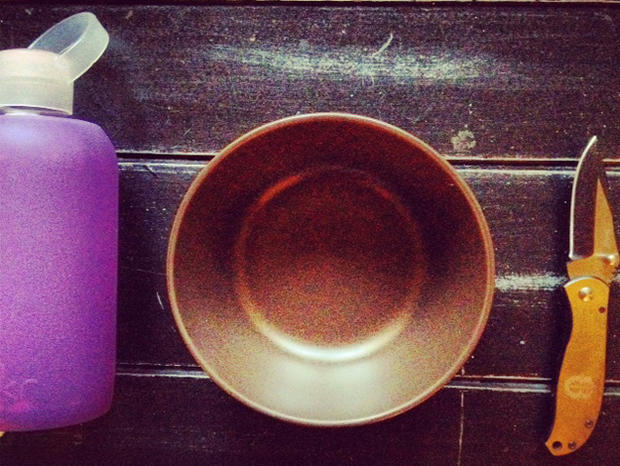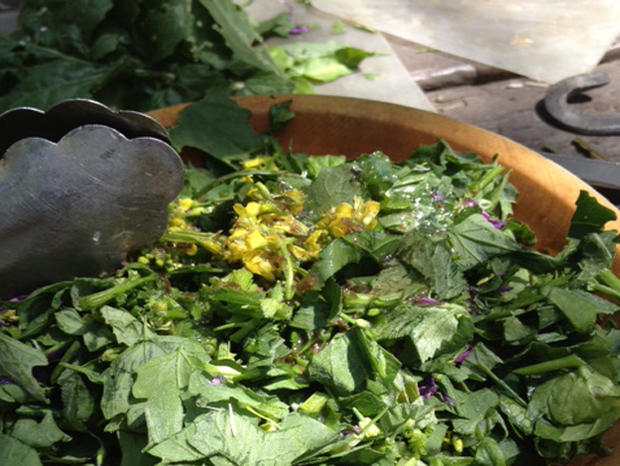SoCal Expert's Tips For Basic Survival
We often go about our daily lives without a second thought about what life would be like if the modern conveniences we so often take for granted were taken away from us in an instant. If you're out hiking alone in a remote area and somehow get lost, can you survive for a few nights? What would happen in the aftermath of a major earthquake that disables all public utilities? What if our water system was compromised and deemed unfit to drink? What would happen once all the stores were looted and you have exhausted all of your home supplies? These are the hard, but very real questions we all need to ask ourselves if we want to be prepared and act appropriately when disaster strikes.
With the right knowledge and skills, you will not only be prepared for a survival situation, but you will also be empowered with less dependence on modern systems. Christopher Nyerges is a local expert that has taught wild and urban survival and living skills through his School of Self-Reliance. He's been teaching for close to four decades, is an author of 10 survival books and has been featured on shows like KCET. To learn more about him and the survival workshops he offers, visit ChristopherNyerges.com.
He is a great authority to learn from and to get hands-on experience with on the basic skills listed here.
Water
Water equals life, so priority one is to find it, store it and know how to purify it if necessary. You can survive for up to a month without food, but only three days max without water. In natural disasters such as major earthquakes, our water sources are at risk of contamination if water lines have been compromised by damage. To be prepared, storing water at home in your garage or basement is the most important and easiest step. In the wild, any water you've brought with you will ultimately run out depending on how long you're out there. Aside from the obvious sources such as rivers and springs, water can be found in dew, plants, rock catchments and so on.
Before drinking, use common sense observation. Does it look, smell and taste good? If water is suspected to be impure, experts suggest a simple three-step purification process that involves filtering it through a cloth, letting sediments settle, and boiling it (or using chemicals). Boiling is the best method since it kills biological contaminants that will get you sick. If you have them handy, iodine tablets can be used, but they often have a shelf life and are not always readily available.
Fire
In an interview with wilderness living skills instructor Jeff Martin of Martin Survival, he had the following to say: "Fire is the essence of wilderness living and survival. In a wilderness living or survival situation, you need fire. Without it, you can die of exposure in three hours or less. When modern society thinks of fire, most picture a lighter and rely on modern day conveniences way too much. What happens when the lighter runs out of fluid or when you run out of matches? You have to resort to primitive technology. Primitive fire materials are all around us! Modern day man looks at primitive fire materials and think they are just plants, but in reality, they are so much more. They are life! Native Americans were well aware of this and depend on these materials. When gathering primitive fire materials there are a few things to look for. First, is the wood soft? Using your thumbnail to score an indentation is a great way to determine this. Second, is the center core is corky or pithy? If so, it will work. To create primitive fire you must have heat, oxygen and fuel. If one is missing you will not have fire."
Shelter
Shelter is necessary to protect you from the harsh reality of the elements such as rain, cold, wind, snow, insects and sun. Because of limited daylight, figuring out your shelter for the night is critical. To conserve energy, ready-to-occupy shelters should be your first choice. If there are no natural (caves, large hollow trees, inner recesses of large rock piles) or man-made (tents, abandoned cabins, under bridges) shelters available, start simply. A lean-to shelter involves leaning a strong branch into the crotch of a tree. You then lean other branches on each side before adding brush and leaves to create a thick layer of insulation. Another simple shelter is the body hollow, which requires a digging instrument. To make it, dig a grave-sized hole and line the bottom with grass and other insulation. You can add a cover by laying branches over the top of the hollow before adding brush and leaves. When building shelters, the goal is to make them tight, compact and only large enough to fit your body.
Tools and weapons
There are a multitude of pre-made or do-it-yourself tools and weapons to equip you for the tasks you need to do. At a minimum, you should at least carry a knife, fire starter and some twine on outdoor excursions (or stored together at home). With just these three items and some survival know-how, you will be able to do most of what is critical in a survival situation. A more comprehensive survival kit for extended time periods would include clothing, a sewing kit, compass, maps, notepads and pencils, two-quart water containers (two per person), water purification tools (chemicals or pump filters), simple eating utensils, basic first-aid kit, digging tool, knives (Swiss-Army Victorinox is ideal), fire starters (magnesium), tinder box, whistle, shelter (tarp, space blanket), a sleeping bag, lightweight cord (at least 50 feet) and a small flashlight with extra batteries.
Food
In the short term, food isn't usually the difference between life and death. We can get by for up to a month without eating as long as we have good water. Animals, plants and a home food storage system are all sources of sustenance.
Nearly all animals can be eaten (if you can catch them), so acquiring skills on making traps and other methods are helpful. Use more than just the meat and capture only what you need since you can't store it in most survival situations. As always, cook meat well. Wild plant foods are very common in the wild and the city. Due to potentially hazardous consequences, it's important not to eat any plants you don't know. Some examples of edible wild plants include cacti, chickweed, dandelion, mustard, lamb's quarter and seaweed. At home, you should grow useful plants such as fruit trees and herb gardens. Food storage can be done by stocking up on canned food that doesn't require refrigeration upon opening. Methods like picking and drying are also effective ways to grow and store food.
How about cooking? If your stove is out of commission or you're in the wild, many foods can be cooked or warmed on flat rocks propped up on other rocks over a fire. To heat liquid, use a discarded soda can by cutting off the top and putting the liquid inside to heat over the fire.
Joy Bitonio has the phrase "Joie de Vivre" tattooed on her shoulder, a reminder to enjoy life every single day. She has a voracious appetite for fun, adventure, food, good cocktails and works out like a madwoman to keep it all together. Check out her other articles on CBS L.A. She also covers fitness on Examiner. Follow her on Twitter.
![[HEADER]](https://assets1.cbsnewsstatic.com/hub/i/r/2013/07/19/f2bdec3e-a2a7-44e2-bb1d-124c85ed1284/thumbnail/620x254/450f797306cf27279c633f7a3b3e7542/header1.jpg?v=55c0f85ebcd2b956528d9c6f5a7e8871#)








